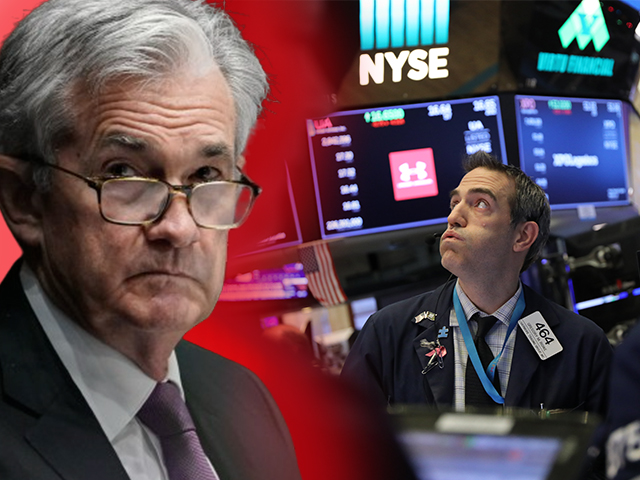2024-04-09 15:20:15
Inflation Has Arisen from the Dead
There’s a specter haunting Wall Street. The specter of resurgent inflation.
The major inflation indexes have been rising, giving rise to a debate about whether this is a “bump” in the road back to the Fed’s two percent target or evidence that inflationary pressures have re-emerged despite a monetary policy the Fed claims is restrictive.
The rise in the consumer price index (CPI) accelerated in each month since November, culminating in the February figure that works out to 5.4 percent annualized. That was the highest since August of last year. The three-month average annualized figure came in at 4.0 percent, above the six-month figure of 3.2 percent, indicating a trend toward higher inflation.
The personal consumption expenditure (PCE) price index, which the Federal Reserve uses as the basis for its inflation target and forecasts, came in at a very hot annualized 4.6 percent in January and 4.1 percent in February. This means that inflation was running at more twice the Fed’s two percent target as the year began.
The producer price index for final demand rose by 0.6 percent in February, a big jump from the 0.3 percent increase in January and the small decline in December. Annualized, it works out to 6.9 percent. This was largely driven by a big jump in energy prices. Importantly, the index of core processed goods for intermediate demand rose 0.5 percent for the month, or 6.3 percent annualized. That speaks of a lot of underlying inflationary pressure.
Will Inflation Stay on the March?
When the government releases the March consumer price index on Wednesday, there will be a lot of focus on whether the trend toward higher inflation continues. Wall Street expects a bit of cooling from the February figures. The consensus forecast is for both core and headline month-to-month CPI to fall from 0.4 percent to 0.3 percent. The Cleveland Fed’s inflation Nowcast agrees, with headline projected to rise 0.34 percent and core to rise 0.31 percent.
One reason Wall Street expects the CPI to moderate is that it sees core goods prices falling. Wholesale used car prices point to a decline in the CPI measure of used cars, and new car prices appear to be falling as dealers increase inventories. The surge of inflation in the PPI’s measure of processed goods for intermediate demand, however, points in the opposite direction. That creates the potential for an upside surprise on the goods side of the CPI report, although the timing of transmission from intermediate goods to consumer goods is very unpredictable.
Note that S&P Global’s purchasing managers survey for March found that average selling prices charged by goods producers rose at the fastest rate for 11 months. S&P economist Chris Williamson noted that there was an especially steep rise in prices charged for consumer goods, which the survey shows rose a a pace not seen for 16 months.
Core services are also seen as cooling. This rose 0.46 percent in February, which rounded up to 0.5 percent. Airfares are seen as rising at a much slower pace or even falling. Auto insurance inflation, which has been scaldingly hot, is likely to cool at some point. Inflation in education and communication services is expected to cool. But these could be more than offset by increases in health insurance and medical care inflation and stubborn shelter inflation.
Even if inflation does cool on a month-to-month basis, it is likely that the year-over-year headline inflation figure will come in higher as the low inflation figure from a year ago gets dropped from the 12-month calculation. Wall Street sees 12-month headline CPI rising 3.5 percent from the previous month’s 3.2 percent. The Cleveland Fed’s Nowcast has headline inflation rising to 3.41 percent.
A Hot Report Could Spook the Fed
So, what will this mean for the Fed? The fed funds futures market currently implies a 57 percent chance of a quarter point cut in June. A report in line with expectations is likely to bolster confidence in a June cut, especially if there is cooling in the core services excluding shelter measure that Fed officials have focused on.
If inflation cools even more than expected, the odds of a rate cut are likely to soar. The Fed has made it very clear that it wants to cut interest rates; so there is an asymmetry in the analysis. One month of good inflation data will easily be allowed to outweigh two or three months of bad inflation data.

(Spencer Platt, Drew Angerer/Getty Images; BNN)
As we have indicated above, our view is that there’s a significant risk that inflation comes in hotter than expected. If this comes about, hopes for a June cut will likely crash. The odds of a July cut—currently around 75 percent—are also likely to fall. Forecasts for year-end rates would likely be raised from the current projection of around 4.75 percent to five percent.
Why would inflation be on the rise despite the Fed’s supposedly restrictive monetary policy? One explanation is that the Fed may simply be wrong about the stance of monetary policy. While raising rates tightens policy and likely puts short-term disinflationary pressure on the economy, holding the rate steady is less effective because the economy is flexible to adjust to the new level of interest.
In short, the Fed stopped hiking last July, so current rates are no longer exorcising inflation.






